Crisis Index Prediction Based on Momentum Theory and Earnings Downside Risk Theory: Focusing on South Korea’s Energy Industry
Abstract
1. Introduction
1.1. Research Background
1.2. Research Purpose
- The development of an energy crisis prediction model.
- The statistical verification of a crisis prediction model.
2. Literature Review
2.1. Prediction of the Energy Industry Based on Time Series Prediction
2.2. The Trends in Latest Research on the Energy Industry
2.3. Momentum Theory
2.4. Earnings Downside Risk Theory
3. Crisis Prediction Model
3.1. Extracting the Crisis Index
3.2. Drawing the Momentum Index
3.3. Illustrating the Earnings Downside Risk Measurement
3.4. Normalizing the Momentum Index and the Earnings Downside Risk Measure
3.5. Proposing the Prediction Model
3.6. Validating the Prediction Model
4. Research Results
4.1. Extracting the Crisis Index
4.2. Visualizing the Momentum Index
4.3. Visualizing the Earnings Downside Risk Measurement
4.4. Normalizing the Momentum Index and the Earnings Downside Risk Measurement
4.5. Proposing the Prediction Model
4.6. Validating the Prediction Model
5. Discussion
6. Conclusions
6.1. Research Conclusions
6.2. Research Contributions
6.3. Research Limitations
6.4. Future Research
Author Contributions
Funding
Data Availability Statement
Conflicts of Interest
References
- Omer, A.M. Energy, environment and sustainable development. Renew. Sustain. Energy Rev. 2008, 12, 2265–2300. [Google Scholar] [CrossRef]
- Fisher, M.L.; Hammond, J.H.; Obermeyer, W.R.; Raman, A. Making supply meet demand in an uncertain world. Harv. Bus. Rev. 1994, 72, 83–93. [Google Scholar]
- Mouapi, A.; Mrad, H. Energy prediction and Energy Management in Kinetic Energy-Harvesting Wireless Sensores Network for Industry 4.0. Appl. Sci. 2022, 12, 7298. [Google Scholar] [CrossRef]
- Scholes, M.S. Crisis and Risk Management. American Econ. Rev. 2000, 90, 17–21. [Google Scholar] [CrossRef]
- Haiyun, C.; Zhixiong, H.; Yuksel, S.; Yüksel, S.; Dinçer, H. Analysis of the innovation strategies for green supply chain management in the energy industry using the QFD-based hybrid interval valued intuitionistic fuzzy decision approach. Renew. Sustain. Energy Rev. 2021, 143, 110844. [Google Scholar] [CrossRef]
- Yang, H.; Huang, K.; King, I.; Lyu, M.R. Localized support vector regression for time series prediction. Neurocomputing 2009, 72, 2659–2669. [Google Scholar] [CrossRef]
- Faruk, D.Ö. A hybrid neural network and ARIMA model for water quality time series prediction. Eng. Appl. Artif. Intell. 2010, 23, 586–594. [Google Scholar] [CrossRef]
- Zivot, E.; Wang, J. Vector autoregressive models for multivariate time series. In Modeling Financial Time Series with S-PLUS; Springer: New York, NY, USA, 2006; pp. 385–429. [Google Scholar]
- Scholtens, B.; Yurtsever, C. Oil price shocks and European industries. Energy Econ. 2012, 34, 1187–1195. [Google Scholar] [CrossRef]
- Gupta, R.; Wohar, M. Prediction oil and stock returns with a Qual VAR using over 150 years off data. Energy Econ. 2017, 62, 181–186. [Google Scholar] [CrossRef]
- Guresen, E.; Kayakutlu, G.; Daim, T.U. Using artificial neural network models in stock market index prediction. Expert Syst. Appl. 2011, 38, 10389–10397. [Google Scholar] [CrossRef]
- Längkvist, M.; Karlsson, L.; Loutfi, A. A review of unsupervised feature learning and deep learning for time-series modeling. Pattern Recognit. Lett. 2014, 42, 11–24. [Google Scholar] [CrossRef]
- Hamdoun, H.; Sagheer, A.; Youness, H. Energy time series forecasting-analytical and empirical assessment of conventional and machine learning models. J. Intell. Fuzzy Syst. 2021, 40, 12477–12502. [Google Scholar] [CrossRef]
- Gjolberg, O.; Johnson, T. Risk management in the oil industry: Can information on long-run equilibrium prices be utilized? Energy Econ. 1999, 21, 517–527. [Google Scholar] [CrossRef]
- Demirer, R.; Lien, D.; Zhang, H. Industry herding and momentum strategies. Pac.-Basin Financ. J. 2015, 32, 95–110. [Google Scholar] [CrossRef]
- Chen, C.; Cheng, C.; Demirer, R. Oil and stock market momentum. Energy Econ. 2017, 68, 151–159. [Google Scholar] [CrossRef]
- Celik, A.E.; Karatepe, Y. Evaluating and forecasting banking crises through neural network models: An application for Turkish banking sector. Expert Syst. Appl. 2007, 33, 809–815. [Google Scholar] [CrossRef]
- Yümlü, S.; Gürgen, F.G.; Okay, N. A comparison of global, recurrent and smoothed-piecewise neural models for Istanbul stock exchange (ISE) prediction. Pattern Recognit. Lett. 2005, 26, 2093–2103. [Google Scholar] [CrossRef]
- Bildirici, M.; Ersinb, Ö.Ö. Forecasting oil prices: Smooth transition and neural network augmented GARCH family models. J. Pet. Sci. Eng. 2013, 109, 230–240. [Google Scholar] [CrossRef]
- Moghaddam, A.H.; Moghaddam, M.H.; Esfandyari, M. Stock market index prediction using artificial neural network. J. Econ. Financ. Adm. Sci. 2016, 21, 89–93. [Google Scholar] [CrossRef]
- Karasu, S.; Atlan, A. Crude oil time series prediction model based on LSTM network with chaotic Henry gas solubility optimization. Energy 2022, 242, 122964. [Google Scholar] [CrossRef]
- Konchitchki, Y.; Luo, Y.; Ma, M.L.Z. Accounting-based downside risk, cost of capital, and the macroeconomy. Rev. Account. Stud. 2016, 21, 1–36. [Google Scholar] [CrossRef]
- Kanagaraj, J.; Senthilvelan, T.; Panda, R.; Kavitha, S. Eco-friendly waste management strategies for greener environment towards sustainable development in leather industry: A comprehensive review. J. Clean. Prod. 2015, 89, 1–17. [Google Scholar] [CrossRef]
- Bale, C.S.; Varga, L.; Foxon, T.J. Energy and complexity: New ways forward. Appl. Energy 2015, 138, 150–159. [Google Scholar] [CrossRef]
- Chang, L.; Lu, Q.; Ali, S.; Mohsin, M. How does hydropower energy asymmetrically affect environmental quality? Evidence from quantile-based econometric estimation. Sustain. Energy Technol. Assess. 2022, 53, 102564. [Google Scholar] [CrossRef]
- Reddy, S.; Painuly, J.P. Diffusion of renewable energy technologies-barriers and stakeholders’ perspectives. Renew. Energy 2004, 29, 1431–1447. [Google Scholar] [CrossRef]
- Geddes, A.; Schmidt, T.S.; Steffen, B. The multiple roles of state investment banks in low-carbon energy finance: An analysis of Australia, the UK and Germany. Energy Policy 2018, 115, 158–170. [Google Scholar] [CrossRef]
- Pan, W.; Hang, C.; Ying, L. “Green” innovation, privacy regulation and environmental policy. Renew. Energy 2023, 203, 245–254. [Google Scholar] [CrossRef]
- Moe, E. Energy, industry and politics: Energy, vested interests, and long-term economic growth and development. Energy 2010, 35, 1730–1740. [Google Scholar] [CrossRef]
- Lei, C.; Farhad, T.; Huangen, C.; Muhammad, M. Do green bonds have environmental benefits? Energy Econ. 2022, 115, 106356. [Google Scholar]
- Chang, L.; Moldir, M.; Zhang, Y.; Nazar, R. Asymmetric impact of green bonds on energy efficiency: Fresh evidence from quantile estimation. Util. Policy 2023, 80, 101474. [Google Scholar] [CrossRef]
- Chang, L.; Iqbal, S.; Chen, H. Does financial inclusion index and energy performance index co-move? Energy Policy 2023, 174, 113422. [Google Scholar] [CrossRef]
- Gray, J.; Goldstein, H.; Thomas, S. Predicting the future: The role of past performance in determining trends in institutional effectiveness at A level. Br. Educ. Res. 2001, 27, 391–405. [Google Scholar] [CrossRef]
- McKinnon, A.C. Decoupling of Road Freight Transport and Economic Growth Trends in the UK: An Exploratory Analysis. Transp. Rev. 2007, 27, 37–64. [Google Scholar] [CrossRef]
- Nelson, R.H. The Momentum Theory of Goodwill. Account. Rev. 1953, 28, 491–499. [Google Scholar]
- Liew, J.; Vassalou, M. Can book-to-market, size and momentum be risk factors that predict economic growth? J. Financ. Econ. 2000, 57, 221–245. [Google Scholar] [CrossRef]
- Moskowitz, T.J.; Grinblatt, M. Do industries explain momentum? J. Financ. 1999, 4, 1249–1290. [Google Scholar] [CrossRef]
- Hong, H.; Stein, J.C. A unified theory of underreaction, momentum trading, and overreaction in asset markets. J. Financ. 1999, 54, 2143–2184. [Google Scholar] [CrossRef]
- Grinblatt, M.; Han, B. Prospect theory, mental accounting, and momentum. J. Financ. Econ. 2005, 78, 311–339. [Google Scholar] [CrossRef]
- Scowcroft, A.; Sefton, J. Understanding Momentum. Financ. Anal. J. 2005, 61, 64–82. [Google Scholar] [CrossRef]
- Bontempo, R.; Manna, M. On the potential of the ideal diffuser augmented wind turbine: An investigation by means of a momentum theory approach and of a free-wake ring-vortex actuator disk model. Energy Convers. Manag. 2020, 213, 112794. [Google Scholar] [CrossRef]
- Gay, C.F.; Moon, S.; Brown, H. Momentum at Last: Perspectives on the U. S. Renewable Energy Industry. Energy Sources 1998, 20, 97–102. [Google Scholar] [CrossRef]
- Soper, H.V.; Cicchetti, D.V.; Satz, P.; Light, R.; Orsini, D.L. Null Hypothesis Disrespect in Neuropsychology: Dangers of Alpha and Beta Errors. J. Clin. Exp. Neuropsychol. 1988, 10, 225–270. [Google Scholar] [CrossRef] [PubMed]
- Bhimani, A. Risk management, corporate governance and management accounting: Emerging interdependencies. Manag. Account. Res. 2009, 20, 2–5. [Google Scholar] [CrossRef]
- Soin, K.; Collier, P. Risk and risk management in management accounting and control. Manag. Account. Res. 2013, 24, 82–87. [Google Scholar] [CrossRef]
- Copeland, R.M. Income Smoothing. J. Account. Res. 1968, 6, 101–116. [Google Scholar] [CrossRef]
- Baik, B.; Choi, S.; Farber, D.B. Managerial ability and income smoothing. Account. Rev. 2020, 95, 1–22. [Google Scholar] [CrossRef]
- Kothari, S.P.; Shu, S.; Wysocki, P.D. Do managers withhold bad news? J. Account. Res. 2009, 47, 241–276. [Google Scholar] [CrossRef]
- Wei, H.; Yan, L.; Chenyang, Z. Accounting-based downside risk and stock price crash risk: Evidence from China. Financ. Res. Lett. 2022, 45, 102152. [Google Scholar]
- Larborda, R.; Olmo, J. Volatility spillover between economic sectors in financial crisis prediction: Evidence spanning the great financial crisis and COVID-19 pandemic. Res. Int. Bus. Financ. 2021, 57, 101402. [Google Scholar] [CrossRef]
- Diebold, F.X.; Yilmaz, K. Better to give than to receive: Predictive directional measurement of volatility spillover. Int. J. Forecast. 2012, 28, 57–66. [Google Scholar] [CrossRef]
- Clifford, W.; Smith, J. Corporate risk management: Theory and practice. J. Deriv. 1995, 2, 21–30. [Google Scholar]
- Lima Rua, O.; Musiello-Neto, F.; Arias-Oliva, M. Linking open innovation and competitive advantage: The roles of corporate risk management and organisational strategy. Balt. J. Manag. 2022, 18, 104–121. [Google Scholar] [CrossRef]
- Clark, R.T.; Bett, P.E.; Thornton, H.E.; Scaife, A.A. Skillful seasonal predictions for the European energy industry. Environ. Res. Lett. 2017, 12, 024002. [Google Scholar] [CrossRef]
- Yu, L.; Lian, S.; Chen, R.; Lai, K.K. Predicting monthly biofuel production using a hybrid ensemble forecasting methodology. Int. J. Forecast. 2022, 38, 3–20. [Google Scholar] [CrossRef]
- Benson, D.J. Momentum advection on a staggered mesh. J. Comput. Phys. 1992, 100, 143–162. [Google Scholar] [CrossRef]
- Bamber, L.S. Unexpected Earnings, Firm Size, and Trading Volume around Quarterly Earnings Announcements. Account. Rev. 1987, 62, 510–532. [Google Scholar]
- Saranya, C.; Manikandan, G. A Study on Normalization Techniques for Privacy Preserving Data Mining. Int. J. Eng. Technol. 2013, 5, 2701–2704. [Google Scholar]
- Lesmond, D.A.; Schill, M.J.; Zhou, C. The illusory nature of momentum profits. J. Financ. Econ. 2004, 71, 349–380. [Google Scholar] [CrossRef]
- Kalinowski, T.; Cho, H. Korea’s Search for a Global Role between Hard Economic Interests and Soft Power. Eur. J. Dev. Res. 2012, 24, 242–260. [Google Scholar] [CrossRef]
- Kim, J.; Chung, K. Emerging risk forecast system using associative index mining analysis. Clust. Comput. 2017, 20, 547–558. [Google Scholar] [CrossRef]
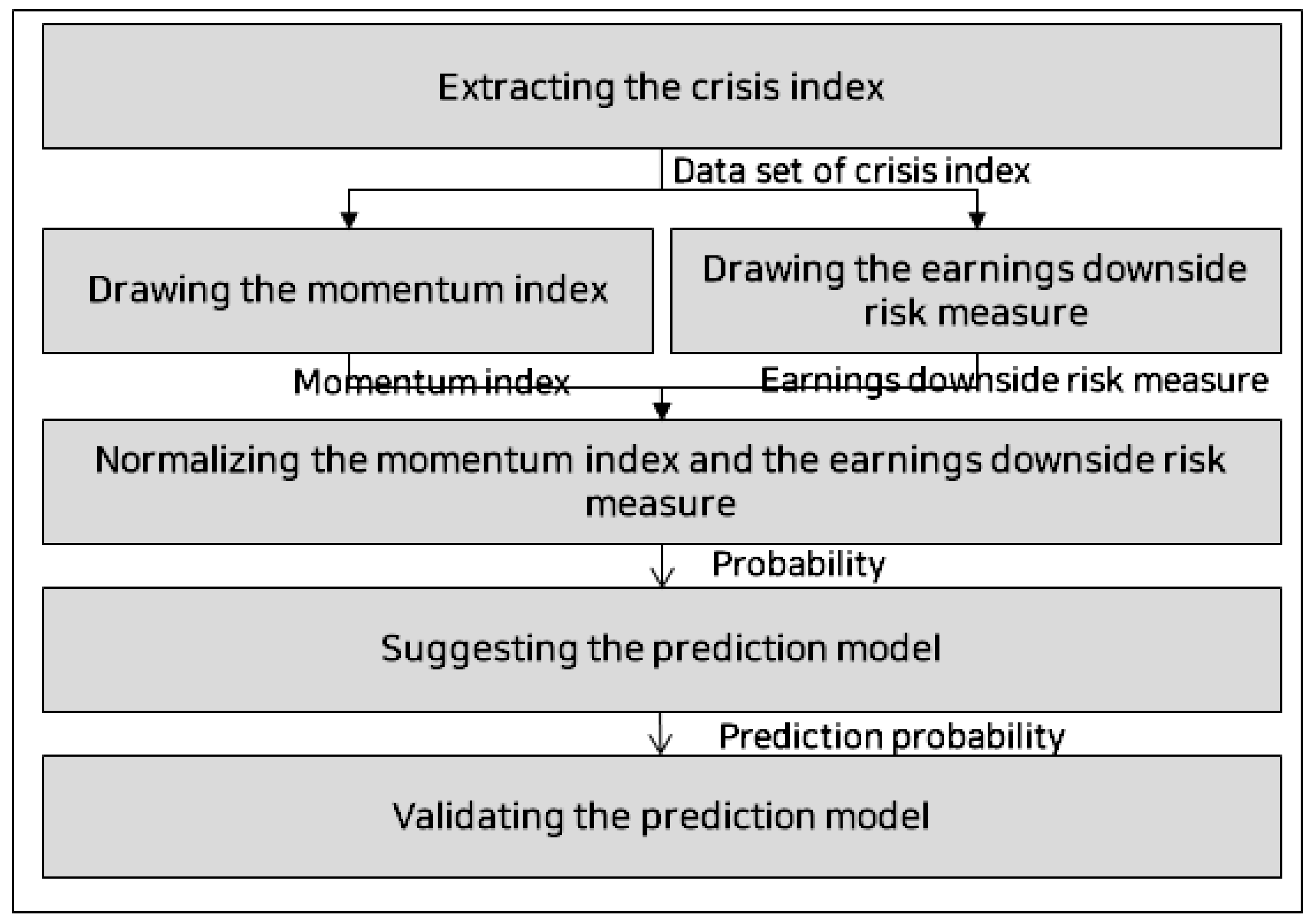
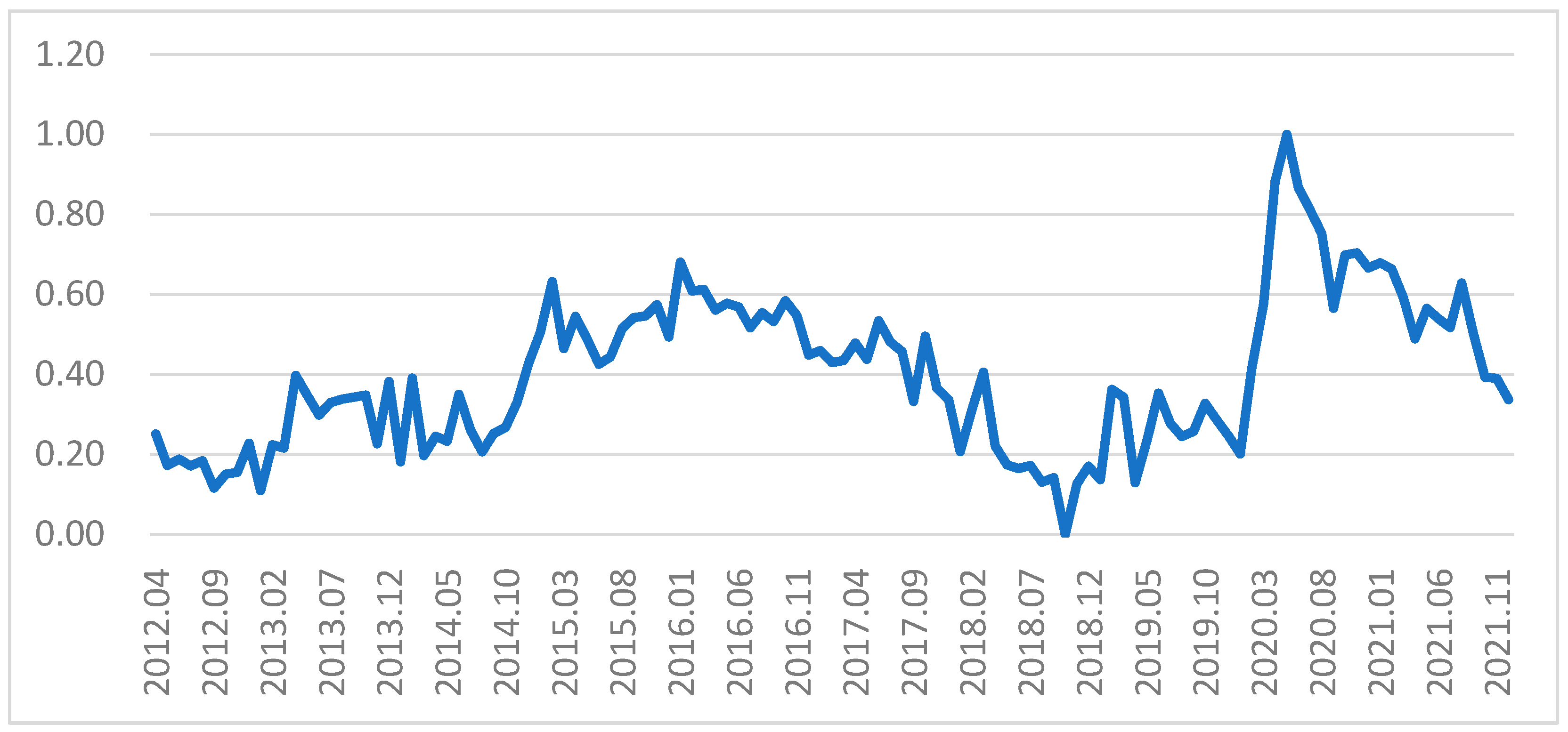
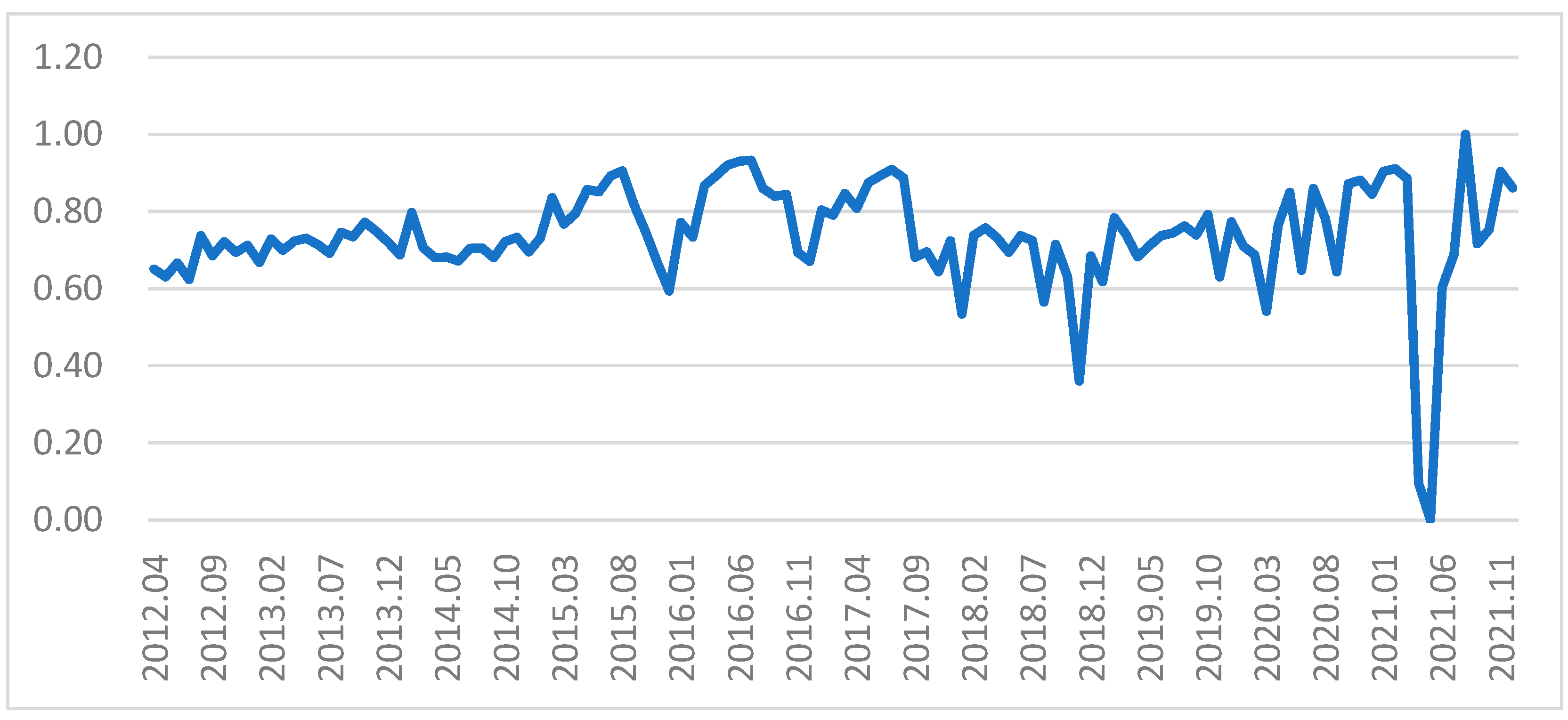
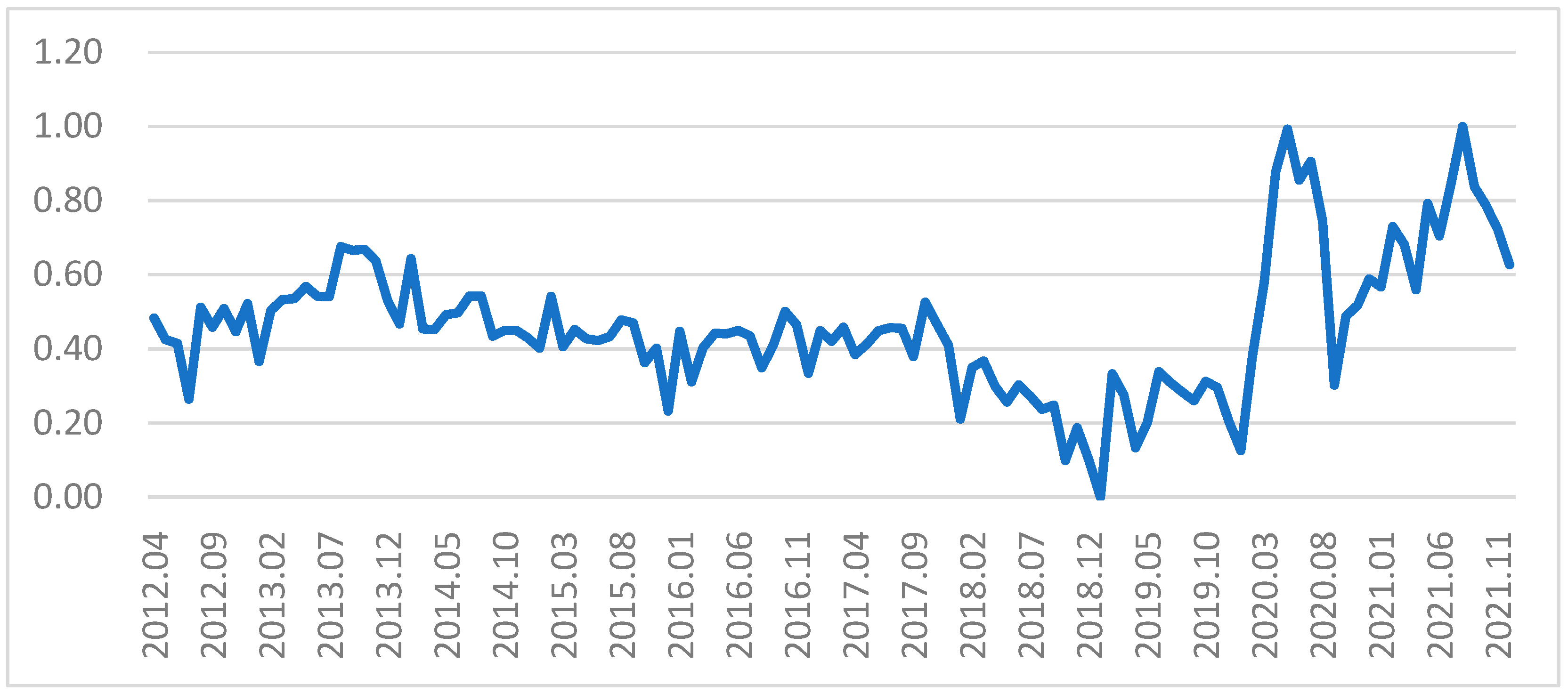
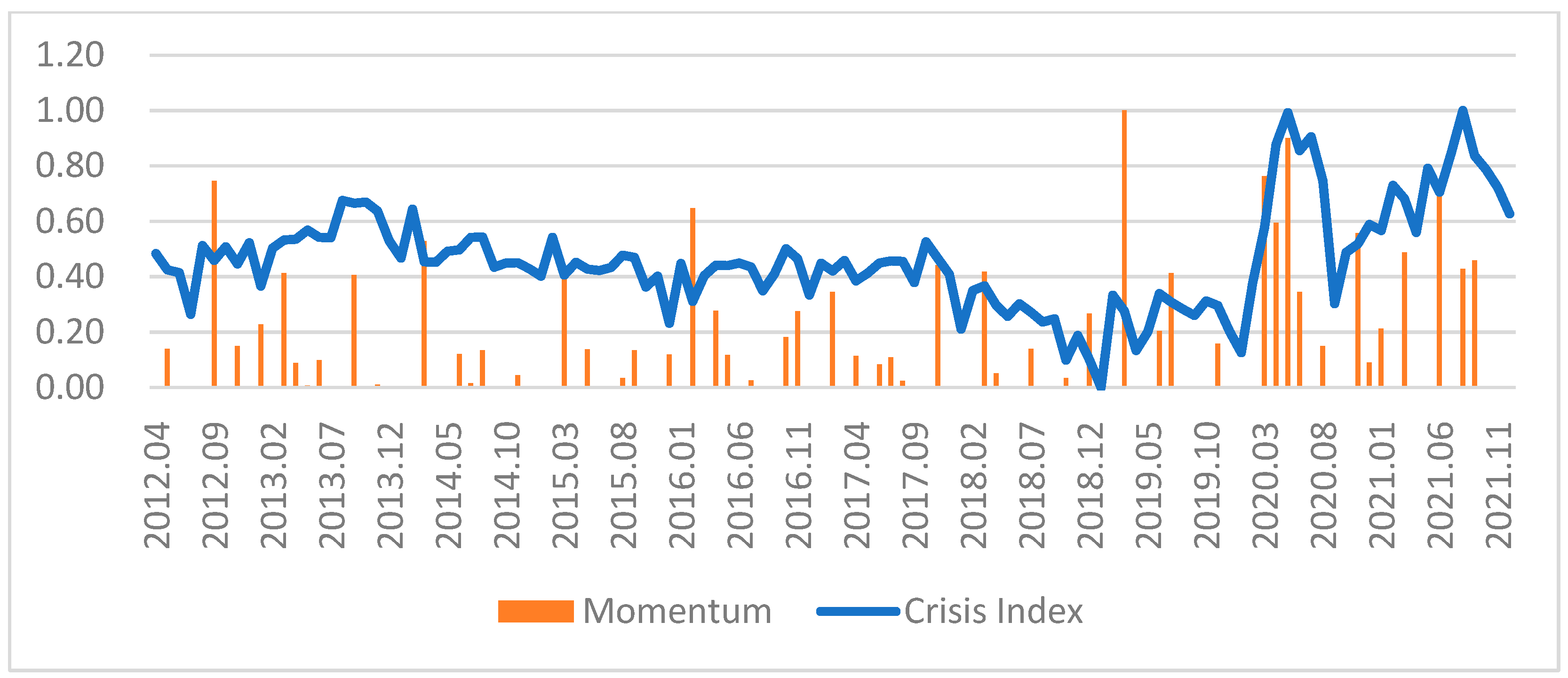
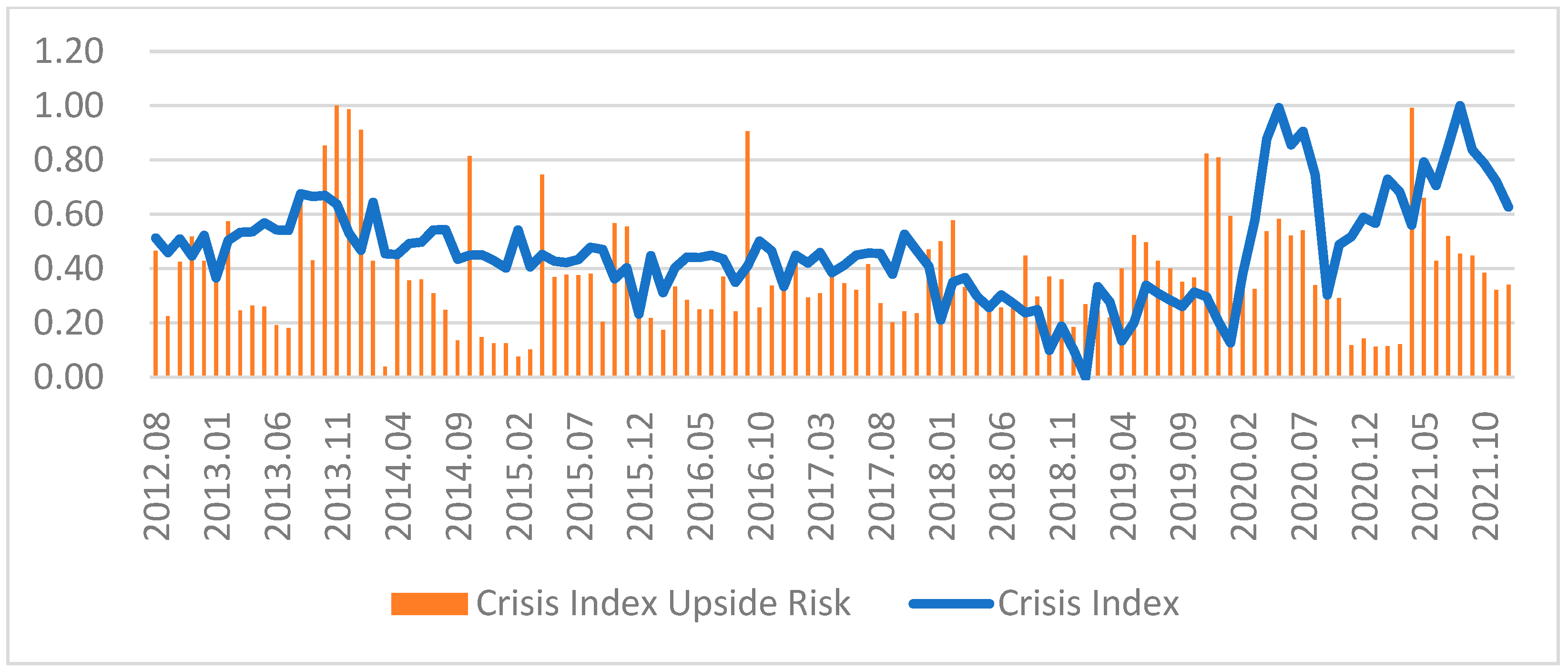
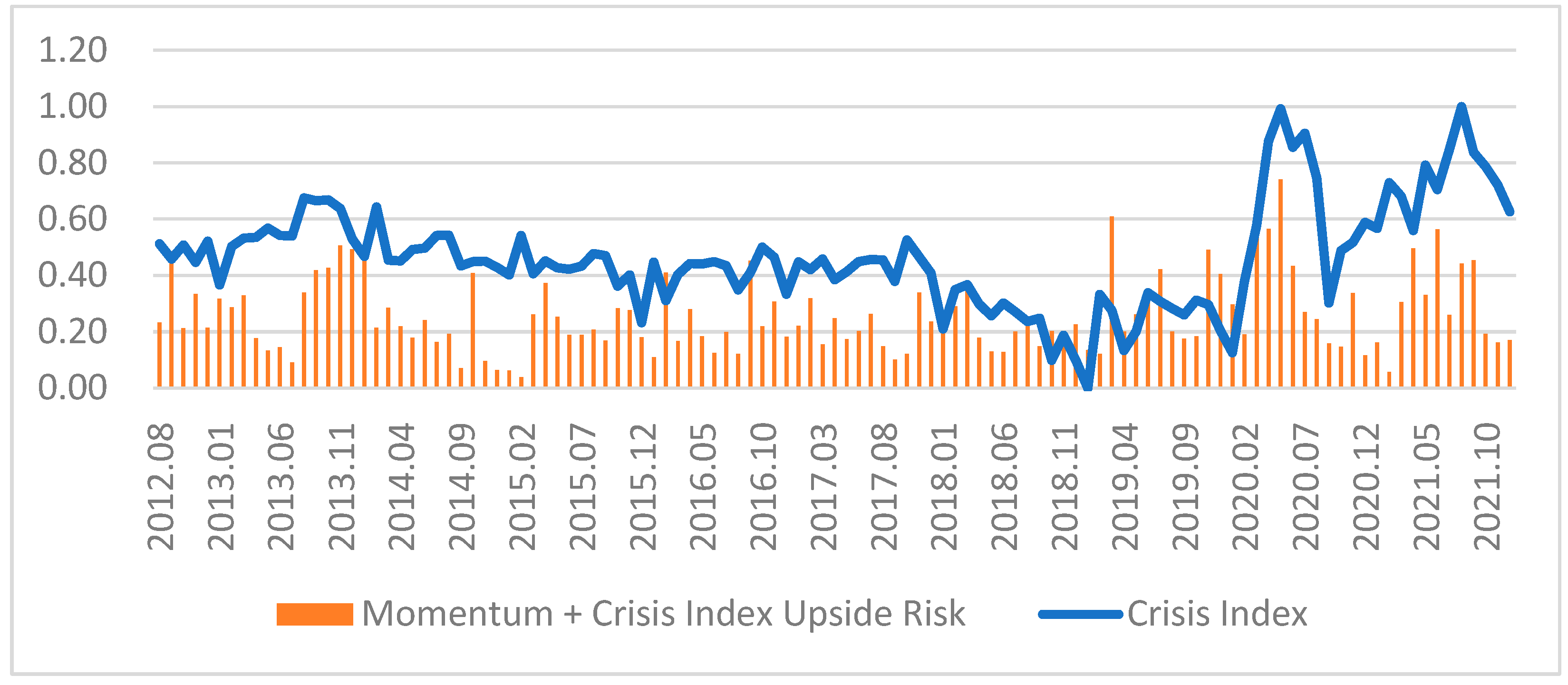
| Research | Prediction Model | Limitations |
|---|---|---|
| [6] | Simultaneous equation regression | Identification problem, sensitivity to model specification, computational complexity, data requirements. |
| [7] | ARIMA | Limited applicability to non-stationary data, lack of flexibility, limited predictive power for long-term forecasting, sensitivity to parameter selection, lack of interpretability. |
| [8,10] | VAR | Large parameter space, sensitivity to model specification, lack of causality, limited applicability to non-stationary data, data requirements. |
| [17] | ANN | Black box nature, data requirements, overfitting, sensitivity to parameters, computationally intensive. |
| [11] | DAN2 | Computational requirements, data requirements, black box nature, sensitivity to hyperparameters, model complexity. |
| [18,19] | MLP | Overfitting, training time, data requirements, black box nature, sensitivity to hyperparameters. |
| CI | MMT | CIUR | (1:9) | (2:8) | (3:7) | (4:6) | (5:5) | (6:4) | (7:3) | (8:2) | (9:1) | |
|---|---|---|---|---|---|---|---|---|---|---|---|---|
| Coef. | 1 | 0.318 | 0.284 | 0.319 | 0.356 | 0.393 | 0.422 | 0.437 | 0.433 | 0.413 | 0.383 | 0.350 |
| Prob. | 0.477 | 0.035 | 0.018 | 0.011 | 0.009 | 0.009 | 0.011 | 0.020 | 0.043 | 0.106 | 0.200 | |
| N | 117 | 117 | 117 | 117 | 117 | 117 | 117 | 117 | 117 | 117 | 117 | 117 |
| Variables | Statics | CI (t) | CI (t + 1) | CI (t + 2) | MMT | CIUR | Model |
|---|---|---|---|---|---|---|---|
| CI | Coef. | 1 | |||||
| Prob. | |||||||
| N | 115 | ||||||
| CI (t + 1) | Coef. | 0.721 | 1 | ||||
| Prob. | 0.000 | ||||||
| N | 115 | ||||||
| CI (t + 2) | Coef. | 0.618 | 0.715 | 1 | |||
| Prob. | 0.000 | 0.000 | |||||
| N | 115 | 115 | |||||
| MMT | Coef. | 0.144 | 0.349 | −0.266 | 1 | ||
| Prob. | 0.125 | 0.000 | 0.004 | ||||
| N | 115 | 115 | 115 | ||||
| CIUR | Coef. | 0.179 | 0.180 | 0.278 | −0.067 | 1 | |
| Prob. | 0.055 | 0.054 | 0.003 | 0.474 | |||
| N | 115 | 115 | 115 | 115 | |||
| Model | Coef. | 0.219 | 0.370 | 0.067 | 0.562 | 0.721 | 1 |
| Prob. | 0.019 | 0.000 | 0.478 | 0.000 | 0.000 | ||
| N | 115 | 115 | 115 | 115 | 115 | 115 |
| CI (t) | CI (t + 1) | CI (t + 2) | |||||||
|---|---|---|---|---|---|---|---|---|---|
| Coef. | t-Value | Prob. | Coef. | t-Value | Prob. | Coef. | t-Value | Prob. | |
| Intercept | 0.359 | 9.948 | 0.000 | 0.353 | 9.826 | 0.000 | 0.363 | 9.962 | 0.000 |
| Model | 0.415 | 3.323 | 0.001 | 0.439 | 3.535 | 0.001 | 0.408 | 3.245 | 0.002 |
| Adj R2 | 0.081 | 0.092 | 0.077 | ||||||
| F-Value | 11.040 | 0.001 | 12.499 | 0.001 | 10.529 | 0.002 | |||
| N | 115 | 115 | 115 | ||||||
Disclaimer/Publisher’s Note: The statements, opinions and data contained in all publications are solely those of the individual author(s) and contributor(s) and not of MDPI and/or the editor(s). MDPI and/or the editor(s) disclaim responsibility for any injury to people or property resulting from any ideas, methods, instructions or products referred to in the content. |
© 2023 by the authors. Licensee MDPI, Basel, Switzerland. This article is an open access article distributed under the terms and conditions of the Creative Commons Attribution (CC BY) license (https://creativecommons.org/licenses/by/4.0/).
Share and Cite
Cha, J.; Park, K.; Kim, H.; Hong, J. Crisis Index Prediction Based on Momentum Theory and Earnings Downside Risk Theory: Focusing on South Korea’s Energy Industry. Energies 2023, 16, 2153. https://doi.org/10.3390/en16052153
Cha J, Park K, Kim H, Hong J. Crisis Index Prediction Based on Momentum Theory and Earnings Downside Risk Theory: Focusing on South Korea’s Energy Industry. Energies. 2023; 16(5):2153. https://doi.org/10.3390/en16052153
Chicago/Turabian StyleCha, Jeonghwa, Kyungbo Park, Hangook Kim, and Jongyi Hong. 2023. "Crisis Index Prediction Based on Momentum Theory and Earnings Downside Risk Theory: Focusing on South Korea’s Energy Industry" Energies 16, no. 5: 2153. https://doi.org/10.3390/en16052153
APA StyleCha, J., Park, K., Kim, H., & Hong, J. (2023). Crisis Index Prediction Based on Momentum Theory and Earnings Downside Risk Theory: Focusing on South Korea’s Energy Industry. Energies, 16(5), 2153. https://doi.org/10.3390/en16052153





